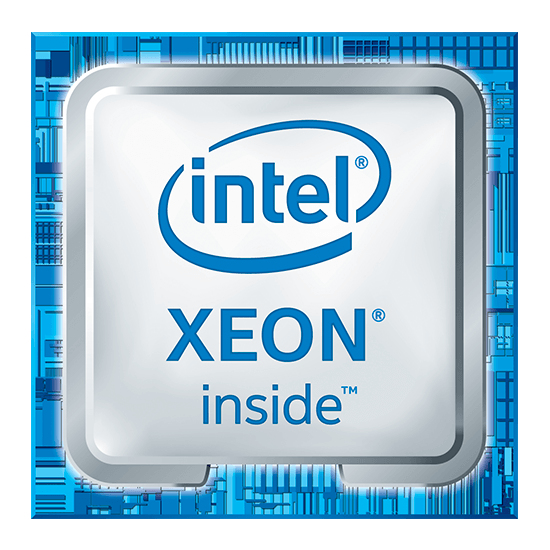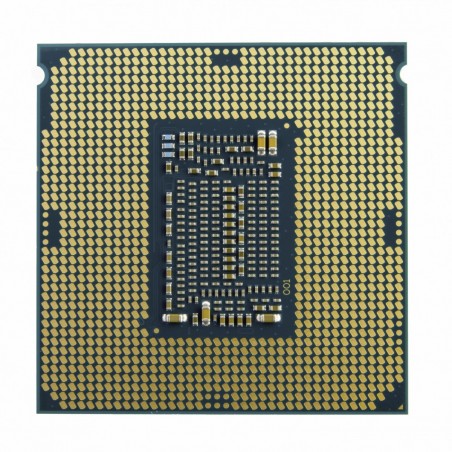Intel Xeon W-2225 4.1 GHz - Skt 2066 Cascade Lake
P/N: CD8069504394102
Producent:
Intel
Czas dostawy: ok. 4-5 dni
2 171,77 zł netto
|
|
||||
| Intel Xeon W-2225, Intel Xeon W, LGA 2066 (Socket R4), 14 nm, Intel, W-2225, 4.1 GHz |

|
|||
| Xeon W-2225 Processor (8.25MB Cache - up to 4.6 GHz) | ||||
| Group | CPUs | |||
| Manufacturer | Intel | |||
| Manufacturer item no. | CD8069504394102 | |||
| Description | ||||
|
Intel® Turbo Boost Technology
Intel® Turbo Boost Technology dynamically increases the processor's frequency as needed by taking advantage of thermal and power headroom to give you a burst of speed when you need it, and increased energy efficiency when you don’t. Intel® vPro™ Platform Eligibility Intel® vPro™ Technology is a set of security and manageability capabilities built into the processor aimed at addressing four critical areas of IT security: 1) Threat management, including protection from rootkits, viruses, and malware 2) Identity and web site access point protection 3) Confidential personal and business data protection 4) Remote and local monitoring, remediation, and repair of PCs and workstations. Intel® Hyper-Threading Technology Intel® Hyper-Threading Technology (Intel® HT Technology) delivers two processing threads per physical core. Highly threaded applications can get more work done in parallel, completing tasks sooner. Intel® Virtualization Technology (VT-x) Intel® Virtualization Technology (VT-x) allows one hardware platform to function as multiple “virtual” platforms. It offers improved manageability by limiting downtime and maintaining productivity by isolating computing activities into separate partitions. Intel® Virtualization Technology for Directed I/O (VT-d) Intel® Virtualization Technology for Directed I/O (VT-d) continues from the existing support for IA-32 (VT-x) and Itanium® processor (VT-i) virtualization adding new support for I/O-device virtualization. Intel VT-d can help end users improve security and reliability of the systems and also improve performance of I/O devices in virtualized environments. Intel® VT-x with Extended Page Tables (EPT) Intel® VT-x with Extended Page Tables (EPT), also known as Second Level Address Translation (SLAT), provides acceleration for memory intensive virtualized applications. Extended Page Tables in Intel® Virtualization Technology platforms reduces the memory and power overhead costs and increases battery life through hardware optimization of page table management. Intel® TSX-NI Intel® Transactional Synchronization Extensions New Instructions (Intel® TSX-NI) are a set of instructions focused on multi-threaded performance scaling. This technology helps make parallel operations more efficient via improved control of locks in software. Intel® 64 Intel® 64 architecture delivers 64-bit computing on server, workstation, desktop and mobile platforms when combined with supporting software.¹ Intel 64 architecture improves performance by allowing systems to address more than 4 GB of both virtual and physical memory. Instruction Set An instruction set refers to the basic set of commands and instructions that a microprocessor understands and can carry out. The value shown represents which Intel’s instruction set this processor is compatible with. Instruction Set Extensions Instruction Set Extensions are additional instructions which can increase performance when the same operations are performed on multiple data objects. These can include SSE (Streaming SIMD Extensions) and AVX (Advanced Vector Extensions). # of AVX-512 FMA Units Intel® Advanced Vector Extensions 512 (AVX-512), new instruction set extensions, delivering ultra-wide (512-bit) vector operations capabilities, with up to 2 FMAs (Fused Multiply Add instructions), to accelerate performance for your most demanding computational tasks. Idle States Idle States (C-states) are used to save power when the processor is idle. C0 is the operational state, meaning that the CPU is doing useful work. C1 is the first idle state, C2 the second, and so on, where more power saving actions are taken for numerically higher C-states. Enhanced Intel SpeedStep® Technology Enhanced Intel SpeedStep® Technology is an advanced means of enabling high performance while meeting the power-conservation needs of mobile systems. Conventional Intel SpeedStep® Technology switches both voltage and frequency in tandem between high and low levels in response to processor load. Enhanced Intel SpeedStep® Technology builds upon that architecture using design strategies such as Separation between Voltage and Frequency Changes, and Clock Partitioning and Recovery. Thermal Monitoring Technologies Thermal Monitoring Technologies protect the processor package and the system from thermal failure through several thermal management features. An on-die Digital Thermal Sensor (DTS) detects the core's temperature, and the thermal management features reduce package power consumption and thereby temperature when required in order to remain within normal operating limits. Intel® Identity Protection Technology Intel® Identity Protection Technology is a built-in security token technology that helps provide a simple, tamper-resistant method for protecting access to your online customer and business data from threats and fraud. Intel® IPT provides a hardware-based proof of a unique user’s PC to websites, financial institutions, and network services; providing verification that it is not malware attempting to login. Intel® IPT can be a key component in two-factor authentication solutions to protect your information at websites and business log-ins. Intel® Speed Shift Technology Intel® Speed Shift Technology uses hardware-controlled P-states to deliver dramatically quicker responsiveness with single-threaded, transient (short duration) workloads, such as web browsing, by allowing the processor to more quickly select its best operating frequency and voltage for optimal performance and power efficiency. Intel® Deep Learning Boost (Intel® DL Boost) A new set of embedded processor technologies designed to accelerate AI deep learning use cases. It extends Intel AVX-512 with a new Vector Neural Network Instruction (VNNI) that significantly increases deep learning inference performance over previous generations. Intel® Volume Management Device (VMD) Intel® Volume Management Device (VMD) provides a common, robust method of hot plug and LED management for NVMe-based solid state drives. Intel® Demand Based Switching Intel® Demand Based Switching is a power-management technology in which the applied voltage and clock speed of a microprocessor are kept at the minimum necessary levels until more processing power is required. This technology was introduced as Intel SpeedStep® Technology in the server marketplace. |
||||
| Main features | ||||
| General | ||||
| Processor family | Intel Xeon W | |||
| Processor socket | LGA 2066 (Socket R4) | |||
| Processor lithography | 14 nm | |||
| Memory channels | Quad-channel | |||
| Maximum internal memory supported by processor | 1024 GB | |||
| Maximum internal memory | 1000 GB | |||
| Memory types supported by processor | DDR4-SDRAM | |||
| Market segment | Workstation | |||
| PCI Express configurations | 1x4, 1x8, 1x16 | |||
| Supported instruction sets | SSE4.2, AVX, AVX 2.0, AVX-512 | |||
| Processor package size | 45mm x 52.5mm mm | |||
Opis
- Cache
- 8MB
- CPU socket type
- Intel Socket 2066 (Kaby Lake X)
- Chip frequency
- 2.9 GHz - 6 GHz

 Panel
Panel



